Symbolism in Nature and Animals
Exploring the Feline Mystique in Ancient Egypt
Uncover the allure of “Feline Mystique: Cats in Ancient Egypt and Beyond” as we delve into the revered role of cats in antiquity.
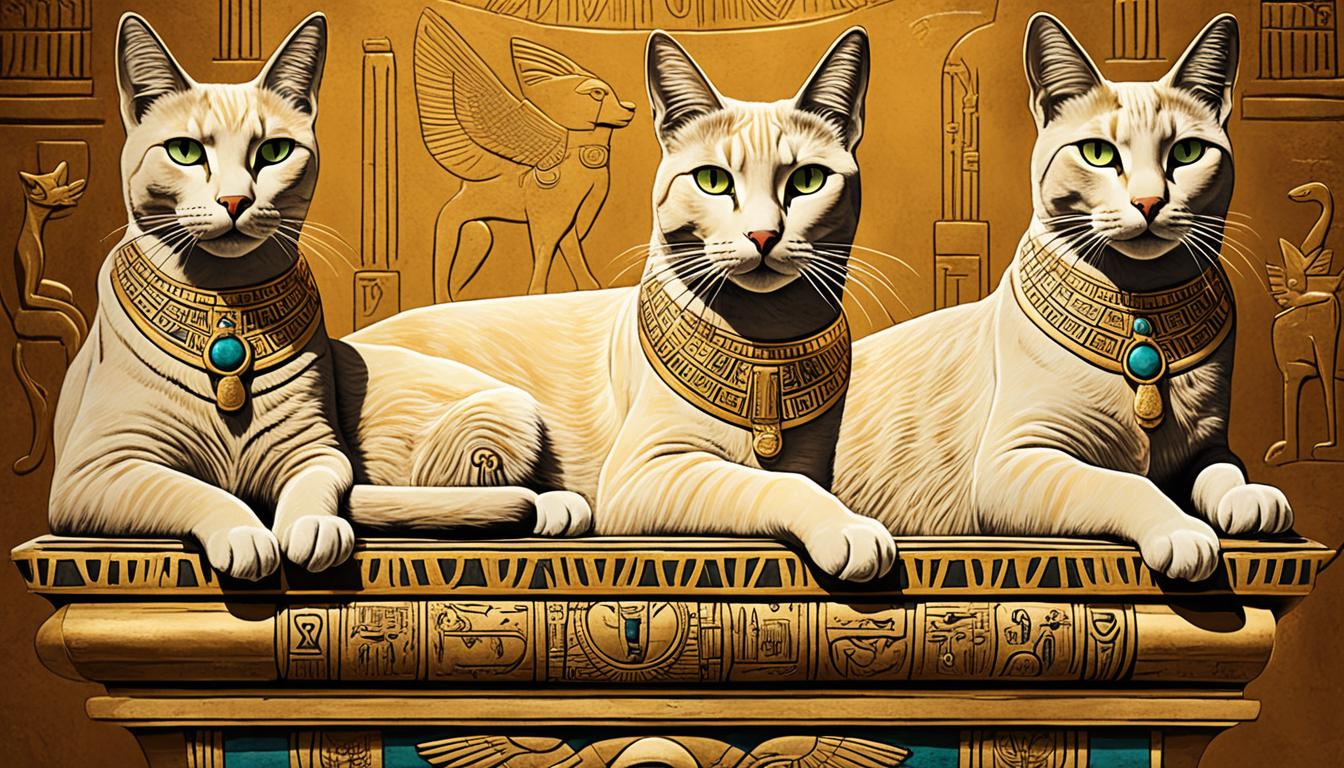
Ever heard that **cats were worshipped in ancient Egypt**? They were thought of as divine beings! The bond between humans and cats back then was super special, way different from other cultures. Cats had a sacred, unique role. Let’s dive into the amazing world of cats in ancient Egypt and discover the extraordinary part they played in history!
Key Takeaways
- Cats in ancient Egypt were regarded as divine beings and were associated with the goddess Bastet.
- They played a prominent role in religious and mythological beliefs, representing protection and fertility.
- Ancient Egyptians mummified and worshipped cats, highlighting their significance in burial practices.
- Cats were seen as guardians and spiritual guides, believed to have supernatural abilities.
- The feline mystique extends beyond ancient Egypt, with cats leaving their mark on various cultures throughout history.
Cats in Ancient Egyptian Religion and Mythology
In ancient Egyptian religion and mythology, cats held a significant role, with connections to gods and goddesses. The goddess Bastet, often represented as a lioness or a woman with the head of a lioness or domestic cat, was closely associated with cats. These majestic creatures were considered sacred animals, believed to embody the divine qualities of Bastet herself. Protected by law, cats were revered, and harming them was considered a crime against the gods. Let’s explore the religious and mythological significance of cats in ancient Egypt.
The goddess Bastet was highly revered in ancient Egyptian society as the goddess of home and fertility. Cats were believed to be her earthly manifestations, symbolizing her power and influence. They were considered her sacred attendants and held a special place in the hearts of the ancient Egyptians.
“Cats were seen as the living embodiment of the goddess Bastet herself, and their presence in households brought blessings and protection. Their graceful and mysterious nature resonated with the divine qualities attributed to Bastet, making them highly regarded and cherished creatures in ancient Egyptian society.”
Mummified cats have been discovered in vast numbers near temples dedicated to Bastet, further highlighting the reverence and worship bestowed upon these feline companions.
The bond between cats and ancient Egyptian religion extended beyond Bastet. Other deities, such as Sekhmet, the lioness goddess of warfare, and Ra, the sun god, were also associated with feline attributes. The mythology surrounding these gods and goddesses further emphasized the connection between cats and the divine in ancient Egyptian culture.
The Symbolism of Cats in Ancient Egyptian Religion
Cats held profound symbolism in ancient Egyptian religion. Their association with the gods and goddesses represented various aspects of life and spirituality.
- Cats symbolized protection and were believed to ward off evil spirits. Their presence in homes and temples offered a sense of security and peace.
- The cat’s ability to see clearly in the darkness symbolized wisdom and clairvoyance, making them mystical and revered creatures.
- Cats were also seen as symbols of fertility and motherhood. The image of a cat nursing her kittens represented abundance and the nurturing qualities associated with motherhood.
This symbolism intertwined with the daily lives of ancient Egyptians, shaping their beliefs and practices.

| Gods and Goddesses Associated with Cats | Description |
|---|---|
| Bastet | The goddess of home and fertility, often depicted with the head of a lioness or a domestic cat. |
| Sekhmet | The lioness goddess of warfare, associated with power and protection. |
| Ra | The sun god, sometimes depicted as a lion or with feline attributes. |
Cats as Symbols of Protection and Fertility
In ancient Egypt, cats held a symbolic significance as protectors and bringers of fertility. They were believed to possess the power to guard against evil spirits and bring good fortune to households. This cat symbolism was deeply ingrained in the Egyptian culture, reflecting the importance of these enigmatic creatures in their society.
The image of a mother cat nursing her kittens was a potent representation of fertility and abundance. It depicted the nurturing and life-giving qualities associated with cats, emphasizing their connection to the cycle of life and their role in ensuring the prosperity and continuation of the family unit. This powerful imagery elevated cats to a symbol of fertility in ancient Egypt.
Moreover, cats were closely associated with the Nile River, which was considered the lifeblood of the Egyptian civilization. The Nile was the source of fertility and sustenance, providing water for crops and supporting the agricultural abundance of the region. Cats, being adept hunters of rodents and pests, played a vital role in protecting the precious grain stores from vermin, further reinforcing their symbolic connection to protection and fertility.
| Symbolism | Description |
|---|---|
| Protection | Cats were believed to guard against evil spirits and protect households from harm. |
| Fertility | The image of a mother cat nursing her kittens represented fertility and abundance. |
The Egyptian reverence for cats as symbols of protection and fertility is evident in their art and mythology. Depictions of cats adorned temples and jewelry, showcasing their esteemed status in society. The symbolic association of cats with protection and fertility persisted throughout ancient Egyptian history, leaving a lasting legacy that further highlights the deep spiritual connection between cats and humans.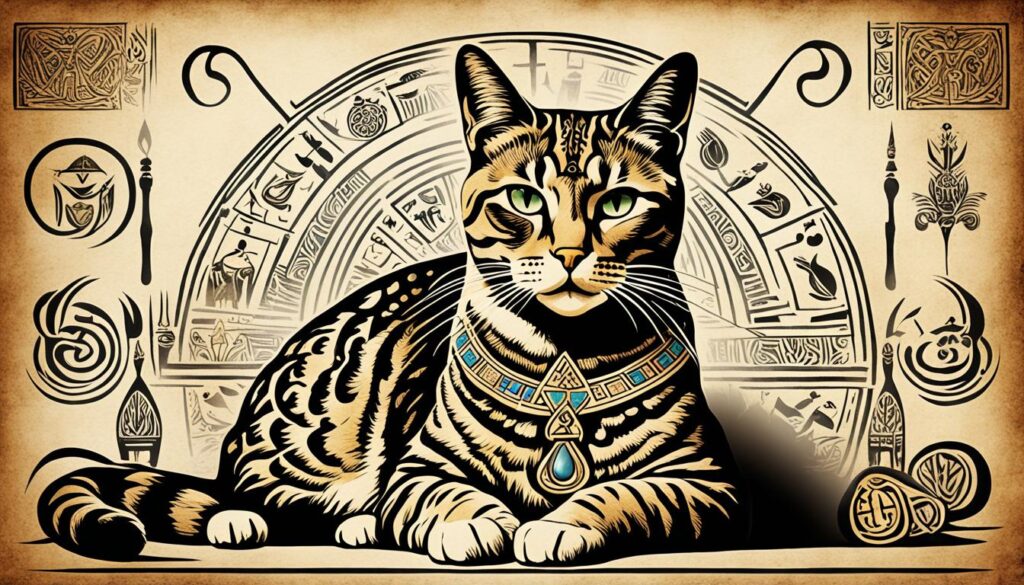
Through their symbolism of protection and fertility, cats have become intertwined with ancient Egyptian culture and continue to captivate our imagination today. Their enigmatic nature and the qualities they represent resonate with people across different cultures and time periods, making them enduring icons of spiritual significance.
Mummification and Worship of Cats in Ancient Egypt
Ancient Egypt’s admiration for cats went beyond their earthly existence. Even in death, cats were considered divine beings and honored with mummification and elaborate burial practices. The mummification process ensured their eternal preservation, symbolizing their continued significance in the afterlife.
As revered pets and protectors, cats held an esteemed position in ancient Egyptian society. Their connection to the goddess Bastet and their association with protection and fertility led to a widespread worship of cats throughout the civilization.
Vast cat cemeteries punctuated the landscape near temples dedicated to Bastet, attesting to the scale of cat worship in ancient Egypt. These sacred burial grounds served as final resting places for beloved feline companions, illustrating the reverence and devotion bestowed upon them.
The mummification process involved carefully preserving the bodies of cats using a combination of natural materials and complex rituals. The organs were removed, and the body was desiccated with natron, a naturally occurring salt. The body was then wrapped in linen bandages, often adorned with amulets and inscriptions to ensure the cat’s safe passage into the afterlife.
“The elaborate mummification and burial practices of cats in ancient Egypt are a testament to the high regard in which they were held. It is a reflection of the profound bond between humans and these beloved creatures.”
These mummified cats were often accompanied by offerings such as food, jewelry, and miniature statues, showcasing the Egyptians’ desire to provide for their beloved pets’ welfare even in the afterlife. The scale and intricacy of these offerings further emphasize the deep spiritual connection between cats and their human counterparts.
These practices highlight the profound belief in the divine nature of cats and their role as intermediaries between humans and the gods. Worshiping and mummifying cats was not only an expression of gratitude and adoration but also a means to secure blessings and protection for oneself and one’s family.

The Preservation of Divine Connection
The mummification and worship of cats in ancient Egypt were essential in preserving the connection between humans and the divine realm. By honoring their feline companions through intricate burial practices, individuals sought to maintain their relationship with the goddess Bastet and ensure her continued favor.
Cat mummification and worship stood as testaments to the significance of these enigmatic creatures in the ancient Egyptian civilization. Their divine status, immortalized through preservation, exemplified their role as beloved companions, protectors, and guardians.
Cats as Guardians and Spiritual Guides
In ancient Egypt, cats were believed to possess supernatural abilities that rendered them as guardians and spiritual guides. Their keen senses and mysterious nature made them an integral part of ancient Egyptian beliefs and rituals.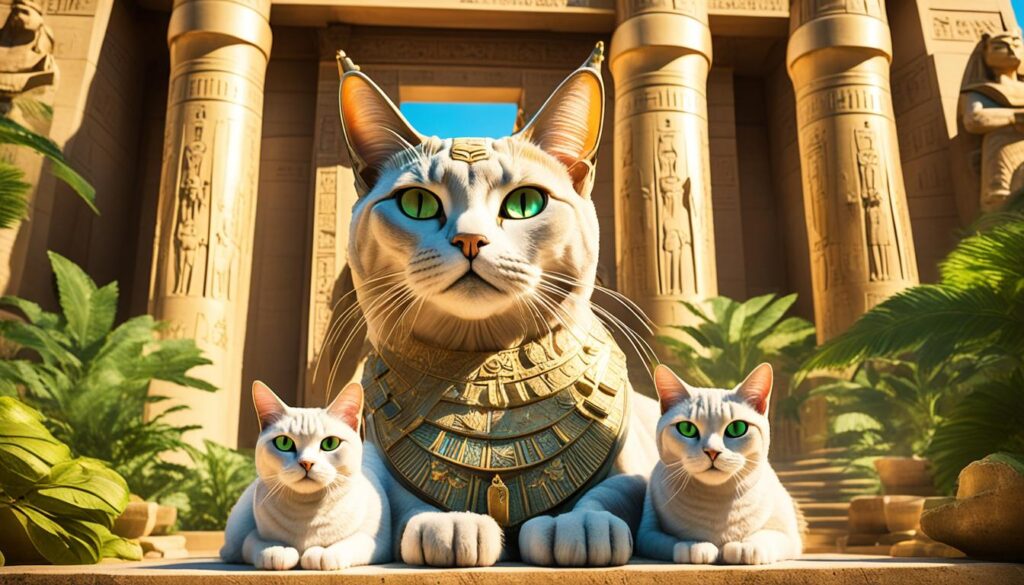
Ancient Egyptians saw cats as protectors against negative energies and evil spirits. They believed that cats had the ability to see beyond the physical realm and communicate with the spiritual world.
“The cat, being the guardian of the house, sees through the veils of the supernatural.”
Cats were often revered as sentinels, keeping households safe from malevolent forces. Their presence brought a sense of security and peace to the people, who trusted their feline companions to ward off any harm.
The Spirituality of Cats
Cats held a sacred position in ancient Egyptian society due to their perceived spiritual connection. Their independence and enigmatic nature were seen as traits that aligned with mystical entities.
- The Egyptians revered cats as mystical creatures with the power to tap into ancient knowledge.
- Cats were thought to possess the wisdom and intuition needed to guide humans on their spiritual journeys.
- It was believed that cats could act as intermediaries between the mortal realm and the divine realm.
Through their mysterious behaviors and piercing gazes, cats were believed to hold profound insights into the mysteries of life and the afterlife.
Cats in Ancient Egyptian Art and Rituals
The spiritual significance of cats in ancient Egypt is evident in their depiction in art and participation in religious ceremonies.
| Ancient Egyptian Art | Ancient Egyptian Rituals |
|---|---|
| Cat sculptures and paintings adorned tombs and temples, symbolizing protection and spirituality. | Cats were included in religious rituals, representing the connection between humans and the divine. |
| The goddess Bastet, often depicted with the head of a lioness or domestic cat, embodied the spiritual power and grace that cats possessed. | Cats were present during rituals dedicated to Bastet, emphasizing their role as spiritual guides and guardians. |
Ancient Egyptian art and rituals reflected the belief that cats were more than mere animals; they were revered beings with mystical qualities.
In conclusion, cats in ancient Egypt were not only viewed as pets but as guardians and spiritual guides. Their supernatural abilities and connection to the spiritual realm made them a vital part of ancient Egyptian culture and beliefs. The thorough integration of cats into art and rituals further emphasized their sacred status. The enduring reverence for cats in ancient Egypt continues to fascinate and captivate us today.
Cats in Other Ancient Cultures
Cats have played significant roles in ancient cultures worldwide, extending beyond the revered status they held in ancient Egypt. From Norse mythology to Japanese folklore, cats have left their pawprints on diverse civilizations. Let’s explore the fascinating roles and cultural significance of cats in these ancient cultures.
Cats in Norse Mythology
In Norse mythology, the goddess Freyja, associated with love, beauty, and fertility, was often portrayed accompanied by two large cats. These feline companions were believed to represent her connection to the natural world, embodying qualities of independence and strength. The presence of cats in Norse mythology highlights their symbolic association with feminine power and protection.
Cats in Japanese Folklore
Japanese folklore is filled with captivating tales featuring cats. One popular figure is the beckoning cat or Maneki-neko. This talisman, often depicted with one paw raised in a beckoning gesture, is believed to bring good luck and fortune to its owner. The Maneki-neko is a beloved symbol in Japan, adorning homes and businesses as a protective charm.
| Ancient Culture | Significance of Cats |
|---|---|
| Ancient Egypt | Revered as sacred animals, associated with deities, and symbolizing protection and fertility. |
| Norse Mythology | Represented the goddess Freyja, signifying love, beauty, and fertility. |
| Japanese Folklore | Believed to bring good luck and fortune as beckoning cats or Maneki-neko. |
The presence of cats in other ancient cultures demonstrates their enduring significance and universal appeal. Whether as symbols of power, luck, or companionship, cats have left an indelible mark on the beliefs and folklore of multiple civilizations.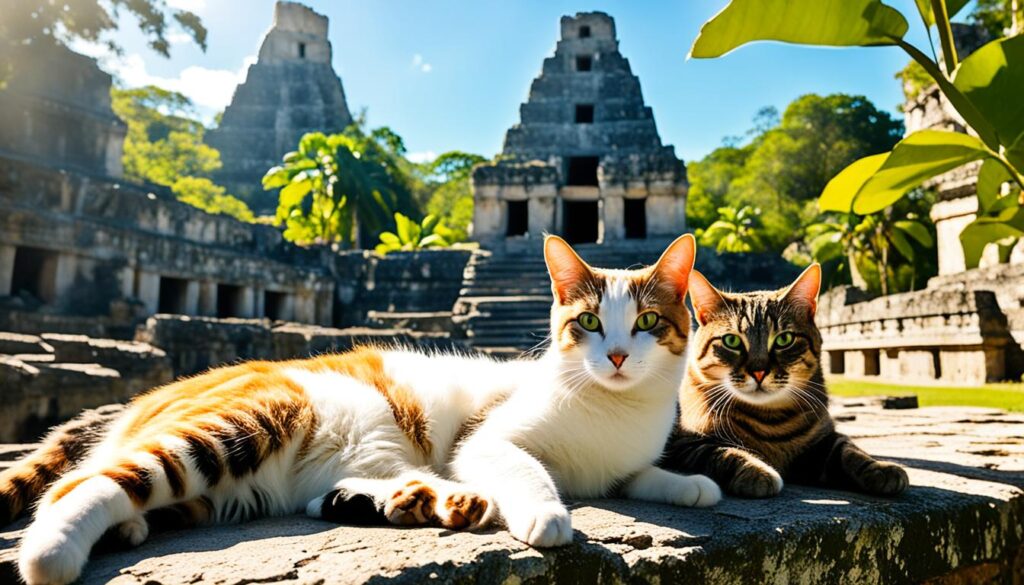
Cats in Contemporary Culture
The mystique of cats extends beyond ancient times and continues to captivate contemporary culture. Cats have ingrained themselves in popular culture, becoming beloved icons and symbols of different concepts. One prominent association that comes to mind is the name “Felix.” This name has become synonymous with cats, evoking a sense of playfulness and charm. It is often associated with good luck and happiness.

The iconic cartoon character “Felix the Cat” further solidified the connection between cats and popular culture. First appearing in silent films during the 1920s, Felix quickly became a beloved character known for his mischievous adventures and trademark grin. His popularity paved the way for other feline characters in animation and comics, leaving an indelible mark on popular culture.
Cats, both real and fictional, remain an enduring presence in contemporary culture. They are often celebrated as pets, bringing joy and companionship to countless individuals and families. Cats have also made their way into various forms of media, ranging from books, movies, and TV shows. Whether portrayed as cunning detectives, magical companions, or lovable sidekicks, cats continue to captivate audiences of all ages.
Symbolizing Independence and Elegance
The grace and independence of cats have made them a symbol of elegance and self-reliance in popular culture.
Cats are often associated with characteristics such as independence, elegance, and mystery, making them ideal symbols in popular culture. Their ability to navigate the world with grace and agility resonates with people, symbolizing a sense of self-reliance and adaptive resilience. Cats have become iconic figures in art, literature, and fashion, embodying an air of sophistication and allure.
Internet Sensations and Memes
In the age of the internet, cats have risen to unprecedented fame thanks to their adorable antics and expressive faces. Cat videos and memes have become viral sensations, captivating online audiences with their humor and charm. Social media platforms are flooded with accounts dedicated to cats, where their adventures and irresistible cuteness are shared with millions of followers.
The enduring allure of cats in popular culture is a testament to their timeless appeal. Whether it’s a classic cartoon character like Felix or the antics of beloved internet celebrities, cats continue to capture our hearts and imaginations. Their presence in contemporary culture serves as a reminder of the enduring bond between humans and these enigmatic creatures.
The Enduring Appeal of Cats
When it comes to pets, cats have an enduring appeal that has stood the test of time. These enigmatic creatures are cherished for their unique blend of companionship and hunting prowess. Whether curled up in a cozy lap or stalking their prey with stealth and precision, cats bring joy and a sense of wonder to the lives of their human families.
Cats have long been known for their ability to provide comfort and companionship. With their soothing purrs and gentle nuzzles, they offer solace and a sense of reassurance. It’s no wonder that cats are often relied upon as emotional support animals, providing much-needed comfort during times of stress or anxiety.
But cats are not just affectionate companions—they are also skilled hunters. Their innate hunting instincts make them excellent pest controllers, effortlessly keeping homes free from unwanted intruders such as rats and mice. This natural ability has endeared cats to humans throughout history, as they help maintain a clean and pest-free environment.
Their Dual Nature: Companions and Hunters
What truly sets cats apart is their ability to balance their role as gentle companions with their instinctual drive to hunt. This duality adds an element of mystery and independence to their personality, captivating the hearts of many. It’s fascinating to witness a domestic cat transform into a fierce predator when presented with the opportunity to chase and capture prey.
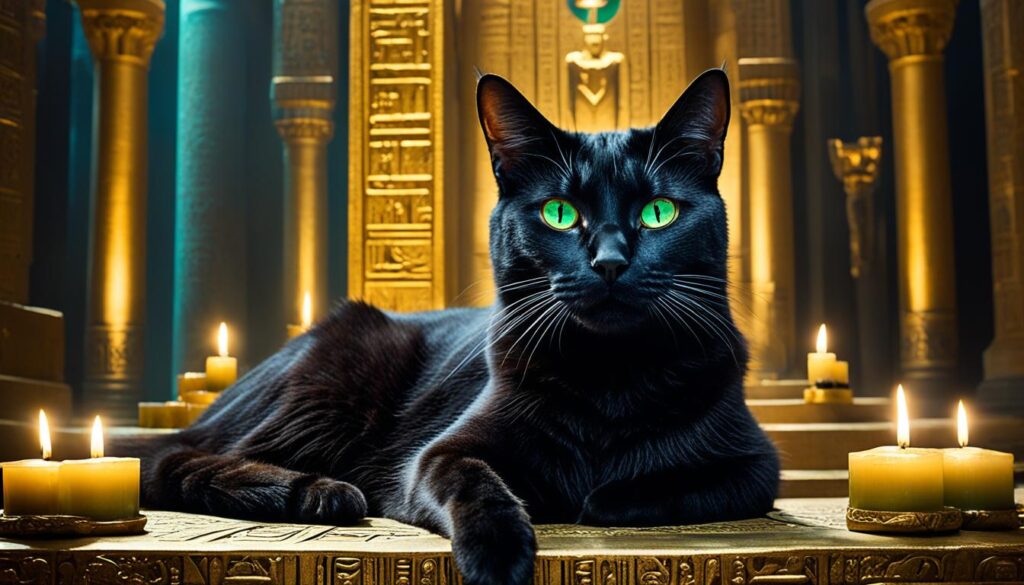
As hunters, cats display remarkable agility and precision. Their lithe bodies and keen senses allow them to detect and stalk their prey with precision. The anticipation, the pounce, and the victorious capture all showcase their natural hunting abilities. Observing these innate behaviors reminds us of their connection to their wild ancestors and their remarkable survival skills.
In addition to their hunting instincts, cats also possess an air of mystery and independence that many find irresistible. Unlike some other pets, cats maintain a sense of autonomy and have a reputation for being fiercely independent creatures. This quality adds an allure that draws in admirers who appreciate their enigmatic nature.
Ultimately, it is the combination of their companionship and hunting prowess that makes cats so appealing. They bring a sense of joy and comfort to our lives, while also showcasing their natural abilities as hunters. This enduring appeal has kept cats in our homes and hearts for generations, creating a special bond that transcends time.
Cats as Symbolic Creatures
Cats have long been regarded as symbolic creatures, embodying mystery, independence, and wisdom. Throughout history and across cultures, cats hold a special place in the spiritual and mystical realms, believed to possess a connection to unseen forces and ancient knowledge.
Symbolism of Cats
The symbolism of cats is multifaceted, representing various qualities and concepts. Their elusive nature and nocturnal habits have often been associated with the mysteries of the unknown. Cats’ keen senses and instinctive behavior symbolize heightened perception and intuition, imbuing them with an air of enigma and mystique.
Cats are often revered for their independence and self-reliance. With their ability to navigate the world on their own terms, they teach us the importance of asserting our individuality and embracing the freedom to explore our passions and desires.
Furthermore, cats are seen as vessels of wisdom and ancient knowledge. Their calm and composed demeanor, coupled with their intuitive nature, has led to the belief that they possess insights into the unseen realms and can guide individuals on their spiritual journeys.
Cats as Mystical Entities
In cultures across history, cats have been revered as mystical entities associated with powerful deities and supernatural phenomena. Ancient Egyptians regarded cats as sacred beings, connected to the goddess Bastet, who represented protection, fertility, and home.
In Norse mythology, cats played a significant role as kept companions of the goddess Freyja. These large felines were believed to possess magical abilities and assisted Freyja in her duties related to love, beauty, and fertility.
Similarly, in Japanese folklore, the beckoning cat or “Maneki-neko” is a revered talisman believed to bring good luck, fortune, and prosperity to its owners. This mystical cat figurine with an upraised paw is commonly seen in shops and homes, inviting positive energies.
“Cats possess a connection to the mystical, a glimpse into the enigmatic forces that shape our reality.” – Unknown
The association of cats with mysticism and the unseen realms can also be found in literature, art, and popular culture. From the bewitching Cheshire Cat in Lewis Carroll’s “Alice’s Adventures in Wonderland” to infamous feline beings in myth and folklore, cats continue to capture our collective imagination and remind us of the enduring allure of the unknown.
Conclusion
Cats have played a significant role in human history, particularly in ancient Egypt. Their association with divinity, protection, and fertility has left a lasting impact on various cultures. Cats continue to captivate our imagination and hold a special place in our hearts. The feline mystique remains an enduring and intriguing aspect of our relationship with these enigmatic creatures.
In conclusion, the reverence for cats in ancient Egypt and beyond highlights the timeless bond between humans and our feline companions. From their revered role in ancient Egyptian religion and mythology to their symbolism as protectors and bringers of fertility, cats have influenced our lives in profound ways.
Through their depiction in art, literature, and popular culture, cats have become symbolic creatures associated with mystery, independence, and wisdom. They are seen as symbolic guardians and spiritual guides, believed to possess a connection to unseen forces and ancient knowledge. Cats embody the enduring appeal of both affectionate companions and skilled hunters, adding a touch of magic to our lives.
Cats in history have left an indelible mark, reminding us of the profound significance of these enigmatic creatures. They continue to be cherished and celebrated, serving as a testament to the deep bond between humans and cats throughout the ages.FAQ
Why were cats revered in ancient Egypt?
What role did cats play in ancient Egyptian religion and mythology?
What symbolism did cats hold in ancient Egyptian culture?
How were cats treated after death in ancient Egypt?
What beliefs did ancient Egyptians have about cats as guardians and spiritual guides?
Were cats revered in any other ancient cultures?
How are cats celebrated in contemporary culture?
What makes cats appealing as companions and hunters?
What symbolism do cats hold in cultures throughout history?
Why do cats hold such a timeless bond with humans?
What is the significance of animal symbolism in ancient cultures?
Animal symbolism in ancient cultures plays a crucial role in their belief systems and spiritual practices. The deer symbolism in cultures such as Native American and Celtic signifies various qualities like grace, spirituality, and gentleness. These symbols were used to convey deeper meanings and connect with the natural world.
Source Links
- https://conservationcubclub.com/cat-gods-cat-deities-in-ancient-mythology/
- https://medium.com/the-life-pub/cats-mystical-companions-and-guardians-of-the-spiritual-realm-d5be9b2983bd
- https://www.cleasimon.com/book/the-feline-mystique/
Vira, Community Manager – Vira is the dynamic voice behind our community engagement. Vira ensures our readers are heard and engaged, whether addressing inquiries or sparking discussions. Her efforts create a welcoming space for learners and enthusiasts to share insights and deepen their understanding of symbolic languages.
Symbolism in Nature and Animals
The Meaning Behind the Death Moth
Heralding profound transformations, the Death Moth's symbolism delves into mysteries of life and the supernatural, enticing readers to uncover its hidden meanings.
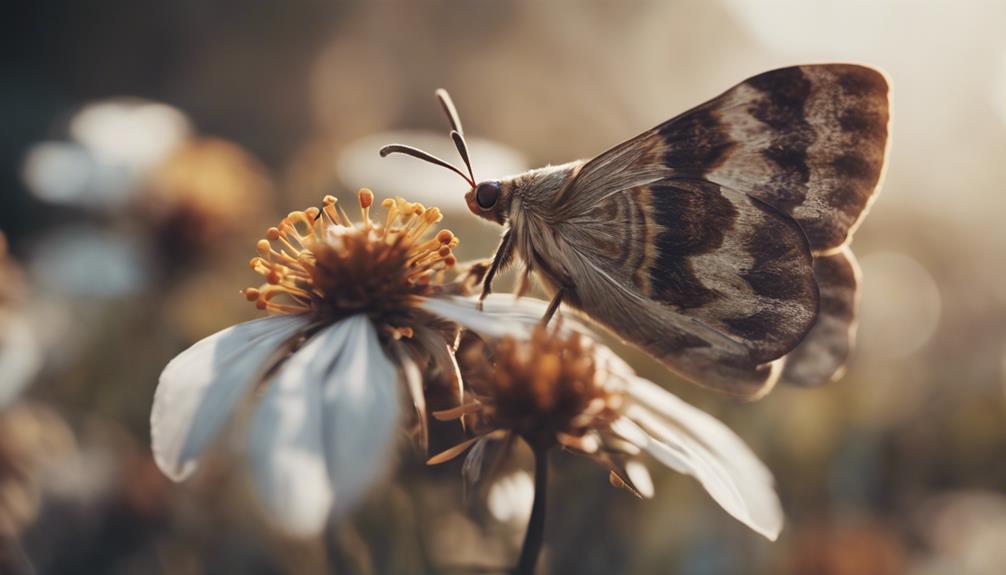
Uncovering the secrets of the Death Moth shows its **powerful symbolism** tied to change, wisdom, and life’s cycle. Its skull-like pattern brings out mystery and the supernatural in gothic art. This moth stands for personal growth and the end of tough times. Its resilience reminds folks to tackle problems head-on. The Death Moth signals **natural endings** and new starts, much like life’s continuous flow. Seeing it nudges us to welcome changes and grow. Learn more about the **Death Moth’s deep** meanings and what they symbolize.
Key Takeaways
- The Deaths Head Hawk Moth symbolizes mystery and the supernatural in gothic and dark art.
- It represents transformation and wisdom, signifying change and personal growth.
- Encountering the death moth can mark the end of challenging times, hinting at new beginnings.
- The death moth signifies metamorphosis and renewal, inspiring spiritual growth and perseverance.
- Embracing the death moth's symbolism teaches lessons about resilience, adaptation, and the cycle of life.
Cultural Representations of the Death Moth
In gothic and dark art, the death moth stands as an iconic symbol embodying mystery and the supernatural. One specific type of death moth that captures the imagination of artists and writers is the Deaths Head Hawk Moth. This distinctive moth, with its eerie skull-like pattern on its thorax, adds an extra layer of macabre symbolism to the already mysterious nature of death moths.
Artists and writers often use the Deaths Head Hawk Moth to explore themes of mortality, the afterlife, and the human psyche. Its unique appearance evokes a sense of foreboding and intrigue, making it a powerful symbol in investigating the darker aspects of existence. In popular culture, the Deaths Head Hawk Moth is frequently associated with themes of fear, death, and the unknown, further cementing its place as a cultural representation of the macabre.
The presence of the Deaths Head Hawk Moth in art and media invites audiences to ponder existential questions and contemplate the deeper meanings behind life, death, and the mysteries that lie beyond.
Symbolism of Transformation and Wisdom

What deeper meanings are conveyed through the symbolism of transformation and wisdom embodied by the death moth?
The Deaths-head Hawk-moth, with its profound symbolism, serves as a powerful metaphor for the journey of transformation and the acquisition of wisdom. Here are four key aspects to ponder:
- Metaphor for Change: The metamorphosis of the Deaths-head Hawk-moth from a humble caterpillar to a majestic moth mirrors the transformative processes individuals undergo in their lives.
- Wisdom in Growth: The symbolism of the death moth signifies the wisdom gained through the challenges and growth experienced during times of change, highlighting the importance of embracing transformation for personal enlightenment.
- Cyclical Nature of Life: The death moth's symbolism reminds us of the cyclical nature of existence, where every phase, including the caterpillar stage, holds valuable lessons that contribute to our overall wisdom.
- Encouragement for Understanding: By embodying the essence of transformation and wisdom, the Deaths-head Hawk-moth inspires individuals to seek deeper understanding through the various stages of life, encouraging personal growth and enlightenment.
Spiritual Messages and Significance
Exploring the spiritual messages and significance behind the symbolism of the death moth reveals profound insights into transformation and rebirth in the context of personal growth and enlightenment. The death moth, scientifically known as Acherontia atropos, carries a powerful message of metamorphosis and renewal. Encountering this moth, whether in its physical form or symbolically, can signify the end of challenging times and the beginning of positive changes. It serves as a reminder to embrace metamorphosis, even in the face of adversity, and to find strength in the process of change.
The spiritual significance of the death moth lies in its representation of the dual nature of the physical and spiritual self. It encourages individuals to balance these aspects of their being and to navigate life's transformations with grace and resilience. Messages from the death moth inspire perseverance and a deeper connection to one's inner wisdom, guiding towards personal evolution and enlightenment. Embracing the symbolism of the death moth can lead to profound spiritual growth and a deeper understanding of the cyclical nature of life.
Interpretations of Endings and New Beginnings

Reflecting on the symbolism of the Death Moth reveals profound insights into the cycles of endings and new beginnings. When pondering the interpretations of endings and new beginnings associated with the Death Moth, we uncover intriguing perspectives on transformation and growth. Here are four key insights to ponder:
- Natural Conclusions: The presence of a Dead Moth can signify the closure of a chapter in one's life, much like the finality represented by a skull. This ending isn't to be feared but rather embraced as a necessary step for new beginnings to unfold.
- New Phases: Encountering a Dead Moth may mark the beginning of a fresh stage after overcoming challenging circumstances. Just as a skull can symbolize mortality, the Death Moth reminds us that from darkness comes light, and from endings come new opportunities.
- Positive Changes: Bright futures often accompany the symbolism of the Death Moth, hinting at positive changes on the horizon. Embracing these changes with an open mind can lead to profound personal growth and development.
- Transformation and Growth: Changes in relationships or life stages may be mirrored by the presence of a Dead Moth, signifying transformation and growth akin to the cycle of life and death. Just as a skull represents the end of one journey, the Death Moth heralds the beginning of another.
Importance of Perseverance and Change
As we explore the symbolism of the Death Moth, we are reminded of the imperative embrace of perseverance and change in life's journey. The moth, with its delicate yet resilient nature, teaches us valuable lessons about facing challenges and adapting to transformations. Let's investigate the importance of perseverance and change through the symbolism of the Death Moth:
| Perseverance | Change |
|---|---|
| Staying strong in adversity | Embracing transformation |
| Resilience in difficult times | Seeking growth through challenges |
| Adapting to setbacks | Moving forward despite obstacles |
The Death Moth serves as a poignant reminder to remain steadfast in the face of trials and to welcome change as a catalyst for personal growth. By embodying the spirit of the moth, we can learn to persevere through life's challenges and embrace the opportunities that come with change.
Frequently Asked Questions
What Does the Death Moth Symbolize?
The Death Moth symbolizes embracing uniqueness and seizing life's opportunities. It can signify impending change or the importance of living fully. This symbol, with its dual nature of positivity and warning, prompts us to make the most of every moment.
Whether on tattoos or jewelry, it encourages a bold and meaningful approach to existence. Embrace the Death Moth as a reminder to live authentically and boldly in the face of life's uncertainties.
What Is the Legend of the Death Moth?
The legend of the Death Moth encompasses a mysterious tale of symbolism, representing both positive and negative omens. It's inspired by the Deaths-head Hawk-moth, with its skull-like markings evoking an eerie reputation.
This moth encourages us to work towards our goals and stay the course, embodying a mix of intrigue and foreboding in various cultural representations. Its significance lies in promoting uniqueness while carrying undertones of impending trouble.
Is the Death Moth Evil?
The Death Moth isn't inherently evil; its symbolism varies based on interpretations. While some perceive it as dark or mysterious due to its appearance and historical connotations, others view it as a symbol of transformation or seizing opportunities.
Cultural beliefs and personal perspectives shape how the Death Moth is perceived. Ultimately, it's neither inherently good nor evil, but rather a symbol open to diverse meanings.
What Is the Death Moth Folklore?
The Death Moth folklore centers on the Deaths-head Hawk-moth, infamous for its skull-like markings. This moth symbolizes doom and mystery in literature and art. Its eerie reputation, linked to King George III's torment, adds to its mystique.
Represented in various media, it often embodies darkness and madness. The Death Moth folklore evokes superstitious fears of the supernatural and evil, making it a gothic symbol.
What is the Symbolic Meaning of the Death Moth in Different Cultures and Belief Systems?
The death moth holds significant meaning in various cultures and belief systems around the world. In some traditions, it is a symbol of transformation and rebirth. Its presence is often associated with spiritual significance, as it represents the cycle of life and death. In many cultures, the moth is seen as a messenger between the physical and spiritual realms, similar to the symbolism of a bird flying.
Conclusion
Just as the death moth undergoes a transformative journey, so too can we embrace change and find wisdom in endings. This symbol of perseverance reminds us to embrace new beginnings and the cycle of life.
By reflecting on the spiritual messages behind the death moth, we can find strength in times of change and trust in the process of transformation.
Embrace the lessons of the death moth and let its symbolism guide you on your own journey of growth and renewal.
Vanice, Content Director – Vanice, armed with extensive knowledge in linguistics, oversees the curation of all content on What Does Meanings. She ensures that every article, video, and guide is informative, engaging, and accessible to audiences of all backgrounds. Her editorial direction keeps our content relevant and enlightening.
Symbolism in Nature and Animals
Unveiling the Black Wolf Symbolism: A Guide to Meaning
Fascinate in the mysteries of black wolf symbolism, revealing hidden truths and transformative insights that will leave you craving for more.
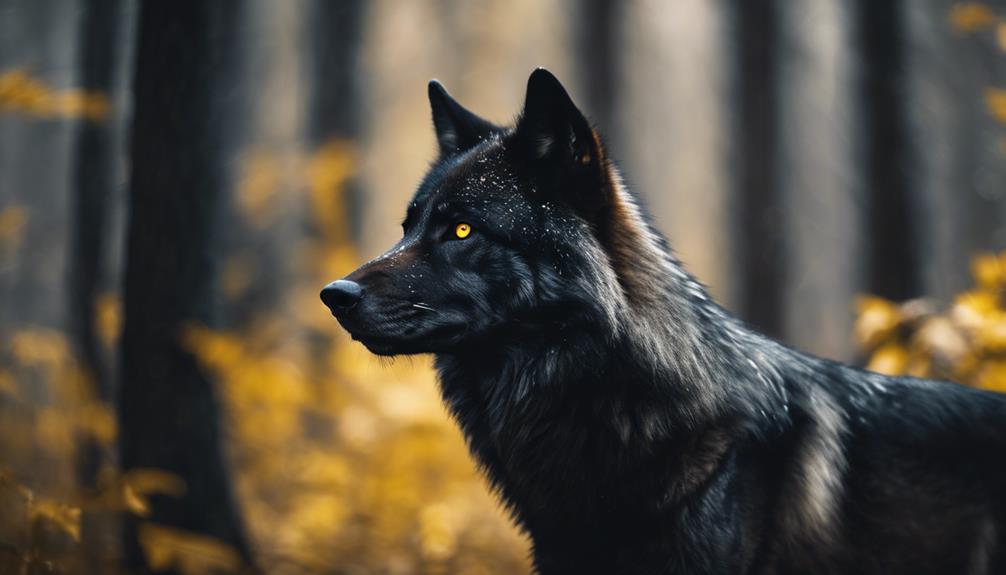
Unveiling the black wolf’s symbolism shows its magic, insight, and secret truths. Meeting one nudges trusting guts and diving into instinct. This creature stands for embracing shadows, hidden wisdom, and toughness when things get rough. In myths, black wolves mean inner strength, change, and finding harmony in light and dark. They protect and guide, offering peeks into human nature. As spirit guides, they bring wisdom, truths, and intuition. Trust instincts, notice coincidences, and seek their help for deeper understanding. The black wolf’s symbolism offers deep insights into growing as a person. Discover more about their powerful transformations and secret meanings.
Key Takeaways
- Black wolves symbolize mystery, insight, and hidden truths, urging us to trust instincts and intuition.
- Embracing darkness with black wolves connects to hidden wisdom and heightened intuition for revealing true potential.
- Black wolves exhibit resilience, stealth, and inner strength, inspiring courage and perseverance in adversity.
- In mythology, black wolves represent inner strength, transformation, and the delicate balance between light and darkness.
- Seeking guidance from black wolf spirit guides enhances spiritual insights, hidden truths, and intuition in nature.
The Power of Black Wolves
Exploring the potency of black wolves reveals their significance in guiding individuals towards hidden truths and heightened intuition. In wolf symbolism, the black wolf stands out as a powerful symbol of mystery and insight. When encountering a black wolf, it serves as a reminder to trust our instincts and pay attention to the signs surrounding us. This majestic creature urges us to probe deeper into our intuition, emphasizing the importance of being aware of hidden truths that may be lurking beneath the surface.
The black wolf's presence is a beacon, illuminating the path towards a greater understanding of ourselves and our surroundings. It signals a time to listen to our inner voice, to heed the warnings of potential threats, and to seek protection when necessary. Embracing the symbolism of the black wolf means embracing the journey towards heightened awareness and embracing the power of intuition to navigate through life's complexities.
Embracing Darkness With Black Wolves
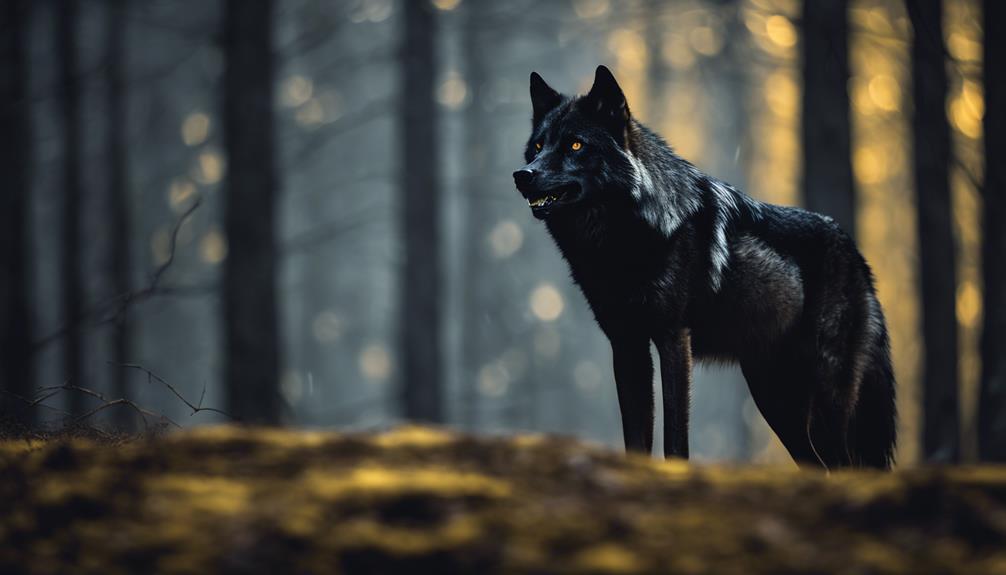
Embracing the darkness with black wolves allows us to explore further into the world of hidden truths and heightened intuition. The spiritual meaning behind encountering a black wolf goes beyond mere coincidence; it signifies a deep connection to our instincts and gut feelings. When faced with challenges or uncertainties, the black wolf serves as a guide, urging us to trust our intuition and rely on our inner wisdom.
In the presence of a black wolf, it's essential to listen to your instincts and pay attention to subtle cues that may reveal hidden truths. This symbolic animal encourages us to embrace the darkness within ourselves, acknowledging that even in the shadows, there's wisdom to be found. By trusting your instincts and delving into the unknown, you can navigate through life's complexities with clarity and purpose.
Incorporating the symbolism of the black wolf into your life means accepting the power of intuition and the importance of trusting your instincts. Embrace the darkness, for within it lies the key to revealing your true potential.
Inner Strength of Black Wolves

Black wolves exhibit remarkable inner strength, showing resilience in the face of adversity. Their stealth and power are emblematic of unyielding determination.
These qualities make them a powerful symbol of overcoming challenges and standing strong in difficult times.
Resilience in Adversity
Journeying through challenges with unwavering determination, black wolves exemplify resilience in adversity, showcasing their inner strength and fortitude. These majestic creatures symbolize the power to confront difficulties head-on and emerge victorious. Their ability to overcome hardships serves as a reminder of the importance of resilience and perseverance in the face of adversity.
Stealth and Power
Indicative of their stealth and power, black wolves symbolize an innate inner strength that resonates across cultures and spiritual beliefs. When exploring the symbolism of black wolves, it becomes evident that their significance goes beyond their physical presence.
- Black wolves embody a sense of power and resilience that can inspire individuals to tap into their own inner strength.
- Their stealthy nature represents the ability to navigate through challenges with grace and determination.
- The symbolism of black wolves encourages individuals to trust their instincts and embrace their hidden truths.
- Understanding the deep symbolism of black wolves can guide individuals towards harnessing their inner power and adapting to various situations with confidence.
Unyielding Determination
With unyielding determination as their hallmark, black wolves embody a steadfast resolve that inspires resilience and courage in the face of challenges. The wolf symbolizes inner power, encouraging individuals to tap into their unwavering resolve when confronted with adversity. This symbolism serves as a reminder of the resilience we possess within ourselves, the ability to face darkness head-on, and emerge stronger on the other side. By connecting with the black wolf's representation of unyielding determination, one can find the strength to persevere, endure, and commit wholeheartedly to their goals. Embracing the unwavering resolve of the black wolf can inspire individuals to confront their inner obstacles with courage and determination, fostering personal growth and self-discovery.
| Unyielding Determination | |
|---|---|
| Inner Power | Unwavering Resolve |
| Resilience | Courage |
Black Wolves in Mythology

In various mythologies, black wolves are often associated with mystery, intuition, and hidden truths. When delving into the domain of mythology, the symbolism and meaning of black wolves reveal intriguing aspects of their significance:
- Black wolves symbolize darkness, inner strength, and transformation in certain cultures.
- Mythological stories depict black wolves as guides through the spiritual domain or protectors of secrets.
- The symbolism of black wolves can represent the shadow self, instincts, and the unknown facets of the psyche.
- Black wolves in mythology embody the delicate balance between light and darkness, illustrating the duality within human nature.
These mythological representations of black wolves offer a glimpse into the profound connection between these majestic creatures and the intricate tapestry of beliefs and stories woven throughout history.
Black Wolf Spirit Guide

When exploring the concept of the Black Wolf Spirit Guide, one must consider the spiritual guidance insights it offers, the symbolism it carries in nature, and the power of intuition it represents.
Trusting our instincts, seeking positive energies, and paying attention to signs are essential aspects of connecting with the Black Wolf spirit guide.
Surrounding ourselves with supportive individuals can also provide guidance and protection along this spiritual journey.
Spiritual Guidance Insights
Exploring spiritual dimensions with the black wolf spirit guide uncovers hidden truths and enhances intuition for seekers of spiritual guidance. When working with the wolf spirit, pay attention to signs and synchronicities that may appear in your life.
Surround yourself with supportive and positive energy to strengthen your connection with the black wolf. Trust your instincts and be mindful of protecting your energy field during this spiritual journey.
Seek guidance from healers or intuitive individuals to gain deeper insights into the wisdom that the black wolf symbolism offers. Remember, the black wolf is a powerful spiritual guide, leading you towards a deeper understanding of yourself and the world around you.
Symbolism in Nature
Symbolizing hidden truths, intuition, and caution in nature, the black wolf guides seekers towards profound insights and heightened awareness.
When the wolf symbolizes hidden truths, it urges us to trust our instincts and pay attention to the messages it brings. Intuition becomes a powerful ally when encountering the black wolf spirit guide, guiding us towards paths that align with our inner knowing.
Caution is also a key aspect of the black wolf's symbolism, reminding us to explore with awareness and mindfulness in our investigations. By surrounding ourselves with positive energy and seeking guidance from intuitive individuals, we can investigate deeper into the mysteries that the black wolf represents in nature.
Power of Intuition
Embracing the Black Wolf spirit guide empowers us to tap into the profound wisdom of our intuition and reveal hidden truths within ourselves. When delving into the power of intuition with the Black Wolf, remember these key points:
- Trust your instincts as they're a gateway to deeper connections.
- Recognize synchronicities as messages guiding you towards enlightenment.
- Uncover hidden truths by listening closely to your inner voice.
- Surround yourself with positive energy to amplify your intuitive abilities.
Black Wolf Symbolism Explained

As we explore the world of black wolf symbolism, we uncover profound insights into hidden truths, intuition, and caution in deciphering people's intentions.
The black wolf symbolizes the importance of trusting our gut feelings and being cautious about potential harm from others. It serves as a reminder to pay attention to signs and synchronicities, guiding us to surround ourselves with positive energy.
Interaction with a black wolf may signal a brighter future, even after facing adversaries in the past. Understanding the messages conveyed by the black wolf requires seeking guidance from healers or intuitive individuals who can help navigate the meanings associated with this powerful symbol.
Embracing black wolf symbolism means embracing the wisdom of intuition and the necessity of caution in our interactions with others. By delving into the depths of black wolf symbolism, we gain a deeper understanding of the hidden truths that shape our perceptions and decisions.
Finding Resilience in Black Wolves

In finding resilience with black wolves, we discover a profound strength rooted in their symbolism. When exploring the symbolism of black wolves, we can draw upon their representation of hidden truths and intuition, encouraging us to trust our instincts.
This trust in our inner guidance can lead us to uncover profound insights and navigate life's challenges with clarity. Additionally, interacting with a black wolf in dreams may signify the importance of paying attention to signs and synchronicities that are guiding us towards our true path.
Surrounding ourselves with supportive and positive energy is essential when encountering the symbolism of black wolves, as it can help us maintain a sense of balance and inner strength. Embracing the messages of trusting our instincts and protecting our energy can empower us to face adversity with resilience and grace.
The Balance of Light and Darkness
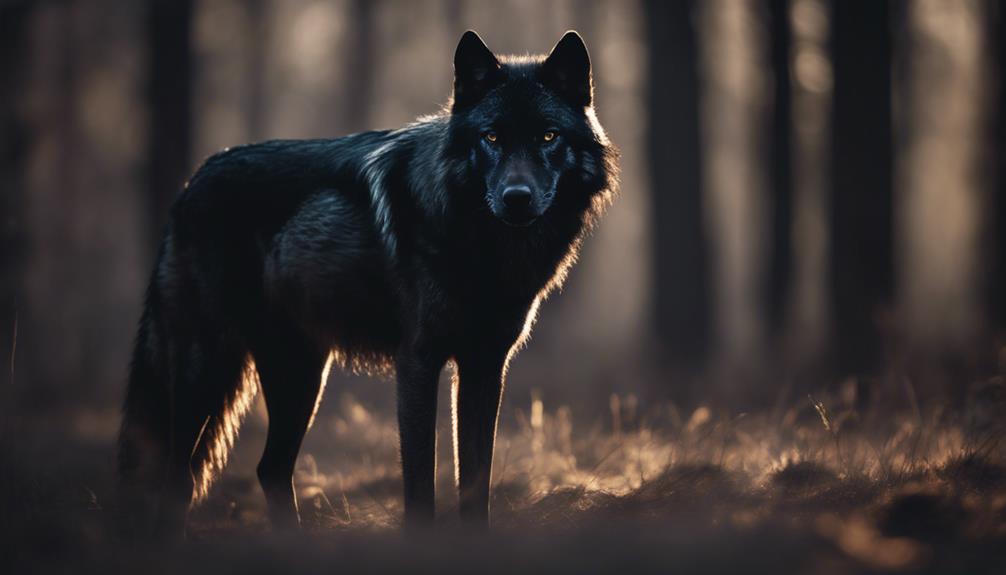
Exploring the domain of black wolf symbolism reveals the delicate balance between light and darkness in our lives. The black wolf, as a wolf power animal, embodies the duality of nature, symbolizing hidden truths and intuition. Encountering a black wolf serves as a reminder to trust our instincts and seek clarity in uncertain situations. It signifies the coexistence of opposing forces, representing the balance between light and darkness within ourselves.
Embracing the energy of the black wolf can lead to transformative growth and understanding. By acknowledging and accepting both the light and dark aspects of our being, we can achieve a harmonious equilibrium. The black wolf challenges us to confront our shadows and embrace our inner strength. It guides us on a journey of self-discovery and personal evolution, encouraging us to navigate life's challenges with grace and resilience.
In essence, the black wolf symbolizes the intricate dance between light and darkness, offering profound insights into the complexities of human nature and the potential for transformative growth.
Unveiling Black Wolf Meanings

Delving into the depths of black wolf symbolism reveals layers of meaning that resonate with our instincts and relationships. When exploring the meanings associated with the black wolf, consider the following:
- Unveiling Hidden Truths: The black wolf serves as a symbol for uncovering hidden truths that may be concealed from plain sight. It urges us to probe deeper into situations and relationships to reveal what lies beneath the surface.
- Trusting Your Intuition: Encountering a black wolf in your dreams or symbolism often signifies the importance of trusting your instincts and gut feelings. Pay close attention to these inner promptings for guidance and direction.
- Exercising Caution: The presence of a black wolf also serves as a warning to be cautious in your interactions with others. It highlights the need to be vigilant and discerning, especially when dealing with individuals who may not have your best interests at heart.
- Seeking Support: If you feel threatened by the symbolism of a black wolf, seek support from healers or intuitive individuals who can provide guidance and assistance in probing the messages conveyed.
Frequently Asked Questions
What Is the Spiritual Significance of the Black Wolf?
The spiritual significance of the black wolf lies in its representation of hidden truths, intuition, and instincts. It serves as a warning to trust our gut feelings and be cautious of others.
Encountering a black wolf may indicate a need to protect our energy and seek assistance. Pay attention to signs and synchronicities associated with the black wolf. Seek support from healers or intuitive individuals if guided to do so.
What Is the Spiritual Meaning of the Wolf Symbol?
The spiritual meaning of the wolf symbol embodies power, intuition, and protection. Wolves signify inner strength, resilience, and guidance in spiritual journeys. They represent trust in instincts, loyalty to oneself, and connection to the divine.
The wolf's spiritual significance highlights wisdom, courage, and independence. Embracing the wolf symbol as a spirit guide can lead to transformative personal growth and insights.
What Does the Black Wolf Symbolize in Handmaid's Tale?
The black wolf in Handmaid's Tale symbolizes danger, deception, and hidden motives within the oppressive society. It represents lurking threats and the predatory nature of those in power, preying on the vulnerable.
This metaphor highlights the darkness and malevolence in Gilead, emphasizing caution, vigilance, and survival instincts. The black wolf underscores the treacherous aspects of the totalitarian regime depicted in the Handmaid's Tale.
What Is the Black Wolf Philosophy?
The Black Wolf Philosophy emphasizes trusting instincts and staying vigilant against hidden threats.
It warns of potential dangers and the presence of enemies in one's path. Encountering a black wolf signifies a need for self-protection and heightened awareness.
Trusting intuition in uncertain situations is vital within this philosophy.
Staying alert and listening to gut feelings can help navigate challenges effectively.
What is the Symbolism of Coyotes in Relation to Black Wolves?
The spiritual significance of daytime coyote sightings is steeped in symbolism. Coyotes are often associated with cunning and adaptability, while black wolves symbolize intuition and the shadows of the night. Together, they represent a balance between light and dark, wisdom and instinct, and the duality of nature.
Conclusion
To sum up, the black wolf symbolizes the balance between light and darkness, reminding us that strength can be found in embracing our shadows.
Just as the night sky holds both stars and shadows, the black wolf represents the resilience and inner strength needed to navigate life's challenges.
Embracing the darkness within ourselves can lead to a deeper understanding of our true power and potential.
Boaz, Founder and Chief Editor – With a profound linguistics and anthropology background, founded What Does Meanings to explore the intricate connections between language, symbols, and cultural identity. His vision has guided the platform from its inception, ensuring that each piece of content enriches our understanding of the world’s symbolic heritage.
Symbolism in Nature and Animals
Blue Butterfly Meaning Unveiled
Navigate the mystical world of the blue butterfly's profound symbolism, hinting at transformation and divine intervention, in 'Blue Butterfly Meaning Unveiled'.

Thinking about the blue butterfly, it has a deep meaning. The **Aztecs** and **Greeks** believed it symbolized **hope** and **spiritual growth**. To Native Americans, it’s a sign of **transformation** and **rebirth**. From myths to tales, this **mesmerizing** insect shows **divine intervention** and **new beginnings**. Today, it still inspires and guides spiritually. The blue butterfly’s importance crosses **boundaries**, showing the beauty in **change** and **personal growth**. **Learn more** about the deep symbolism behind this magical creature.
Key Takeaways
- Blue Butterfly symbolizes hope and spiritual growth in various cultures.
- Represents divine intervention and blessings in mythology.
- Linked to themes of transformation and good luck in folklore.
- Holds significance in different spiritual traditions worldwide.
- Guides towards personal transformation, courage, and self-discovery.
Origins of Blue Butterfly Symbolism
The origins of blue butterfly symbolism can be traced back to ancient cultures like the Aztecs and Greeks. In Native American cultures, the blue butterfly is seen as a symbol of hope and a connection to the spiritual domain. It represents spiritual growth, transformation, and rebirth, carrying a deep spiritual message for those who encounter it.
This tiny creature is believed to be a spiritual messenger guiding individuals along their paths towards enlightenment. The blue butterfly's significance goes beyond mere aesthetics; it holds a profound spiritual connection that transcends geographic boundaries. Its presence in various cultures underscores its universal appeal as a symbol of spiritual renewal and transformation.
Whether seen in the buzzing streets of a modern city or the serene wilderness of a remote forest, the blue butterfly continues to deliver its powerful spiritual message to those open to receiving it.
Spiritual Significance in Mythology

In various mythologies and cultural beliefs, blue butterflies hold significant spiritual importance. In Greek mythology, the blue butterfly is intricately linked to Psyche, the goddess of the soul, symbolizing transformation and the human psyche's depths.
Native American cultures view the blue butterfly as a symbol of divine intervention and trust in instincts, signifying guidance and protection. The Aztecs believed that the blue butterfly represented the souls of deceased warriors, embodying resilience and the cycle of life and death.
In certain Asian traditions, the blue butterfly is associated with blessings, abundance, and auspicious signs, reflecting good fortune and prosperity. The spiritual significance of the blue butterfly transcends time and geographical boundaries, resonating with different cultures and belief systems across the world.
Whether in Greek mythology, Native American cultures, Aztec beliefs, or Asian traditions, the blue butterfly carries a profound symbolic and spiritual meaning that continues to captivate and inspire.
Blue Butterfly in Folklore

Setting off on a journey through folklore from diverse cultures worldwide, we uncover the enchanting tales that intertwine the blue butterfly with themes of transformation and spiritual growth. In various cultural narratives, encountering a blue butterfly is often seen as a symbol of good luck and a connection to the spiritual domain. The beauty of the blue butterfly isn't just in its appearance but also in the profound meanings attached to it.
In Chinese culture, the blue butterfly is revered for its representation of transformation and spiritual journey. It's believed that encountering a blue butterfly can signify a spiritual awakening or the start of a new chapter in one's life. The blue butterfly serves as a guide, leading individuals towards positive change and personal growth. Its presence in folklore symbolizes the potential for renewal and the hope for a brighter future. Through these stories and myths, the blue butterfly continues to inspire and uplift those on their own spiritual quests.
Interpretations in Different Cultures

Exploring interpretations of the blue butterfly in various cultures reveals a rich tapestry of symbolic meanings and spiritual connections. The significance of the blue butterfly varies across different spiritual traditions, offering profound spiritual insights and cultural significance. In Chinese culture, the blue butterfly symbolizes love and enduring relationships, while Greek mythology links it to Psyche, the goddess of the soul. Among the Aztecs, the vibrant blue butterfly represents the souls of fallen warriors, embodying themes of transformation and spirituality. Encountering a blue butterfly can encourage us to find hope and embrace change in our lives.
| Culture | Interpretation |
|---|---|
| Chinese | Symbol of love and long-lasting relationships |
| Greek | Connected to Psyche, the goddess of the soul |
| Aztec | Represents the souls of deceased warriors |
| Various Cultures | Embodies themes of transformation and spirituality |
Modern Relevance and Interpretations

Embracing the symbolism of the blue butterfly in modern contexts reveals its profound relevance in spiritual growth and personal transformation.
The blue butterfly is often seen as a messenger from the spiritual domain, reminding us to embrace change and let go of limitations in our real life. Its presence offers a sense of comfort and encouragement as we navigate the complexities of our inner journey.
In modern interpretations, the blue butterfly symbolizes grace, inspiration, and the opening of higher dimensions of awareness within ourselves. When we pay attention to the blue butterfly's guidance, we're guided towards self-discovery, courage, and a deeper connection with our intuition.
Frequently Asked Questions
What Is the Meaning of Seeing a Blue Butterfly?
When we see a blue butterfly, it signifies transformation, growth, hope, and a spiritual connection. This beautiful creature can represent positivity, intuition, and guidance on our journey.
Different cultures assign varied meanings to the blue butterfly, such as love and spiritual awakening. Encountering one may symbolize rebirth and spiritual guidance.
It serves as a reminder to embrace change, nurture personal growth, and trust in the journey ahead.
What Does the Blue � Mean?
When we gaze upon the blue butterfly, we witness a symbol of transformation and hope. Its presence signifies growth, peace, and spiritual guidance.
This delicate creature embodies themes of love, renewal, and authenticity. The blue butterfly serves as a messenger of change and rebirth, encouraging us to embrace the present moment and evolve.
In its wings, we find a reflection of our own journey towards enlightenment and inner peace.
What Does a Blue Bottle Butterfly Mean Spiritually?
When it comes to the spiritual meaning of the blue bottle butterfly, it signifies transformation and renewal. This beautiful creature represents the purity and freedom of the soul undergoing a spiritual journey. It symbolizes overcoming challenges and embracing a fresh start.
The blue bottle butterfly is often seen as a sign of hope, guidance, and connection to the spiritual domain. In various traditions, it's considered a symbol of good luck, prosperity, and longevity.
What Is the Blue Butterfly in Astrology?
The blue butterfly in astrology symbolizes clarity, calmness, and spiritual growth. It's often associated with the planet Mercury, governing communication, intellect, and adaptability.
While not a traditional astrological symbol, the blue butterfly can offer insights and inspiration when considering one's birth chart or seeking spiritual guidance. Its presence can bring a sense of peace and enlightenment to astrological practices, encouraging reflection and growth in personal development.
What is the spiritual meaning of different colored butterflies, including blue and yellow?
When it comes to the spiritual significance of butterflies, each color holds a unique symbolism. The yellow butterfly spiritual significance represents joy, hope, and optimism. Blue butterflies are associated with transformation, growth, and inner peace. Understanding the meanings behind different colored butterflies can provide insight and guidance in spiritual journeys.
Conclusion
To sum up, the blue butterfly holds diverse meanings across cultures and time periods, symbolizing transformation, hope, and spiritual growth. Its significance in mythology and folklore continues to fascinate and inspire.
As we reflect on the interpretations and symbolism of the blue butterfly, we can't help but wonder: what other hidden meanings lie within the delicate wings of this beautiful creature?
Robert, Research Specialist—Robert specializes in visual explorations and brings a keen eye for detail to our research team. He delves into the historical and cultural backgrounds of symbols to present deeply researched content beautifully, making the old and mystical accessible to a modern audience.
-

 Cultural and Historical Symbols2 weeks ago
Cultural and Historical Symbols2 weeks agoUnderstanding “What Does Eid Mubarak Mean”
-

 Modern Symbols and Signs6 days ago
Modern Symbols and Signs6 days agoSubaru's Dashboard Symbols Unraveled: 10 Meanings
-

 Cultural and Historical Symbols2 weeks ago
Cultural and Historical Symbols2 weeks agoExploring Crosses and Their Meanings in Depth
-

 Modern Symbols and Signs2 weeks ago
Modern Symbols and Signs2 weeks agoIs Five Guys Closing Permanently? The True Story
-

 Cultural and Historical Symbols3 months ago
Cultural and Historical Symbols3 months agoKing Abdulaziz University Blackboard Guide
-
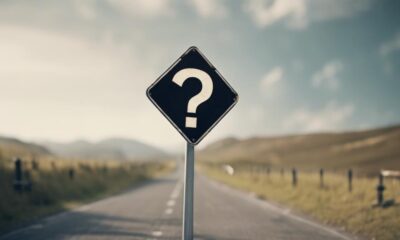
 Modern Symbols and Signs3 months ago
Modern Symbols and Signs3 months agoUnderstanding the Meaning of a Question Mark Road Sign
-

 Spiritual and Esoteric Meanings2 weeks ago
Spiritual and Esoteric Meanings2 weeks agoUnveiling Bird Poop on Car Spiritual Meaning
-

 Spiritual and Esoteric Meanings3 months ago
Spiritual and Esoteric Meanings3 months agoUnveiling the Meaning of 111 in the Bible















